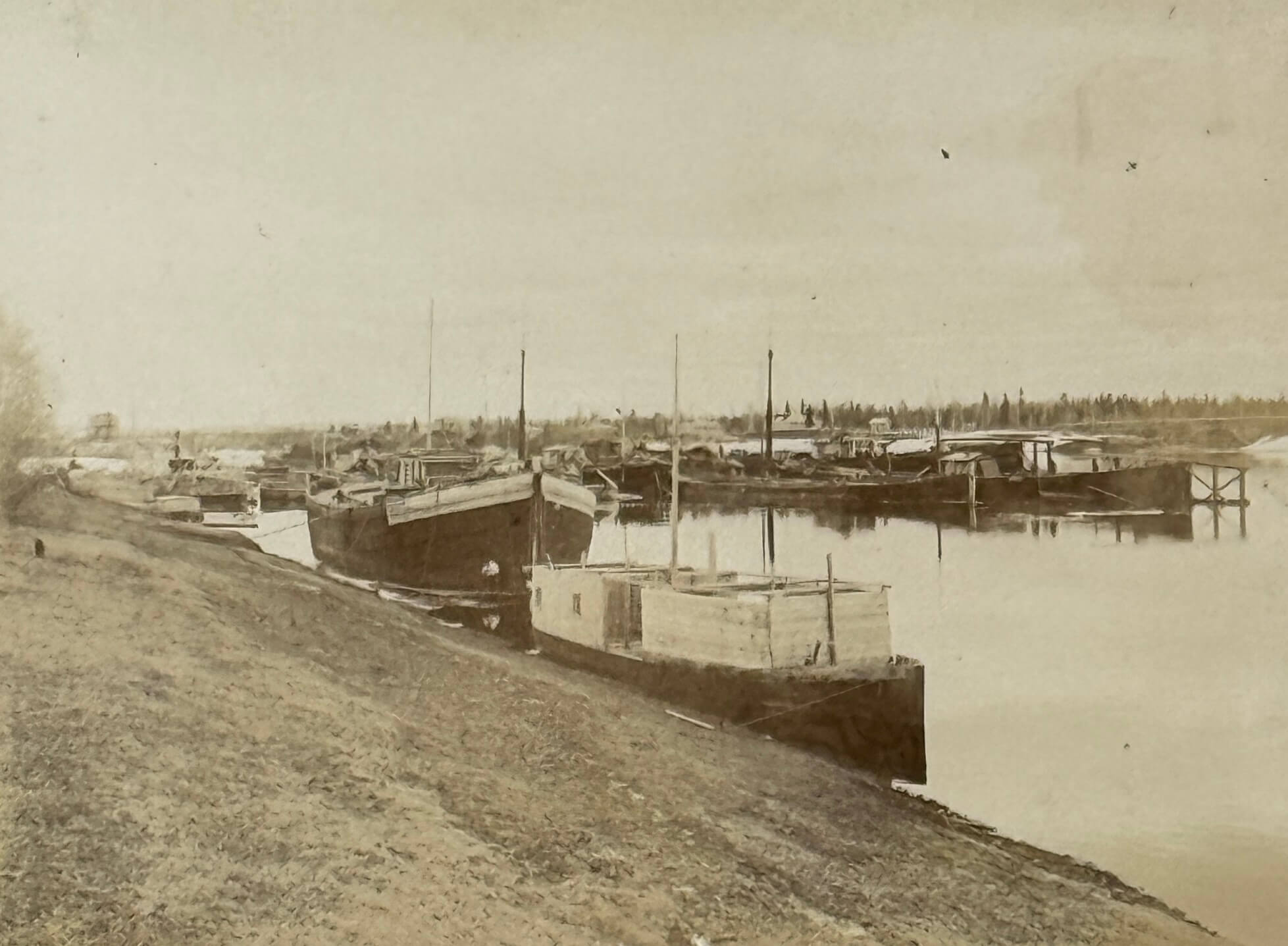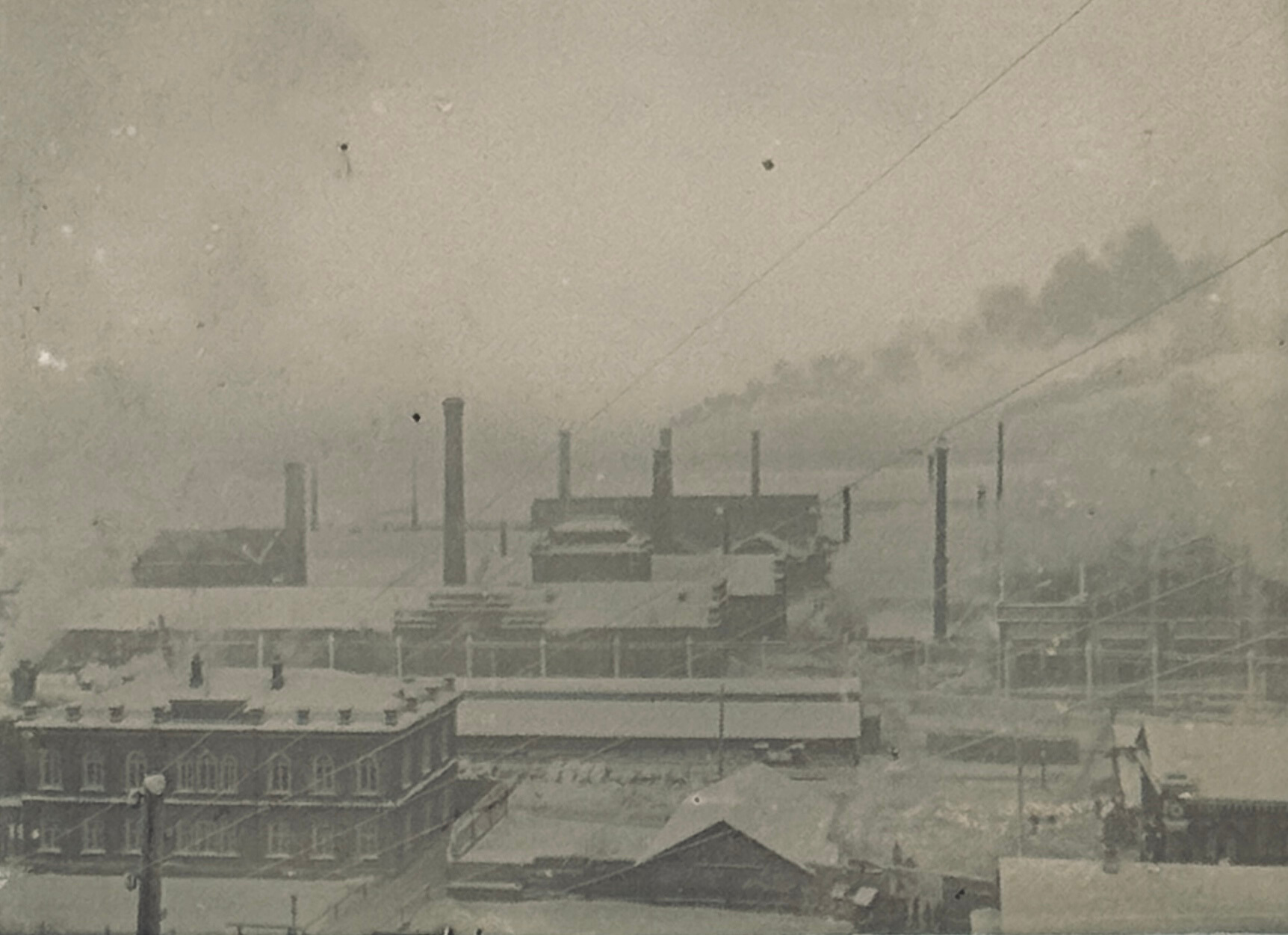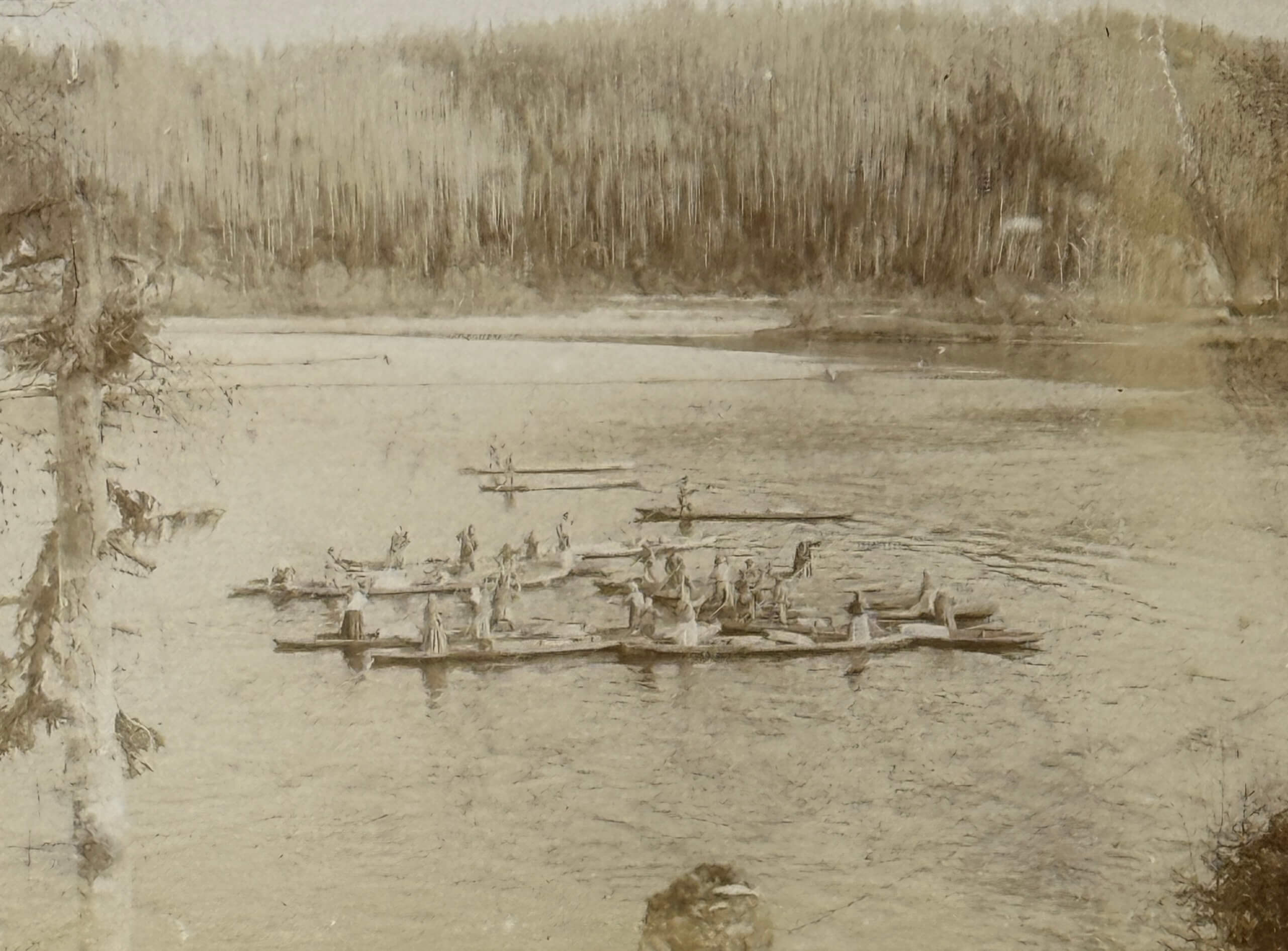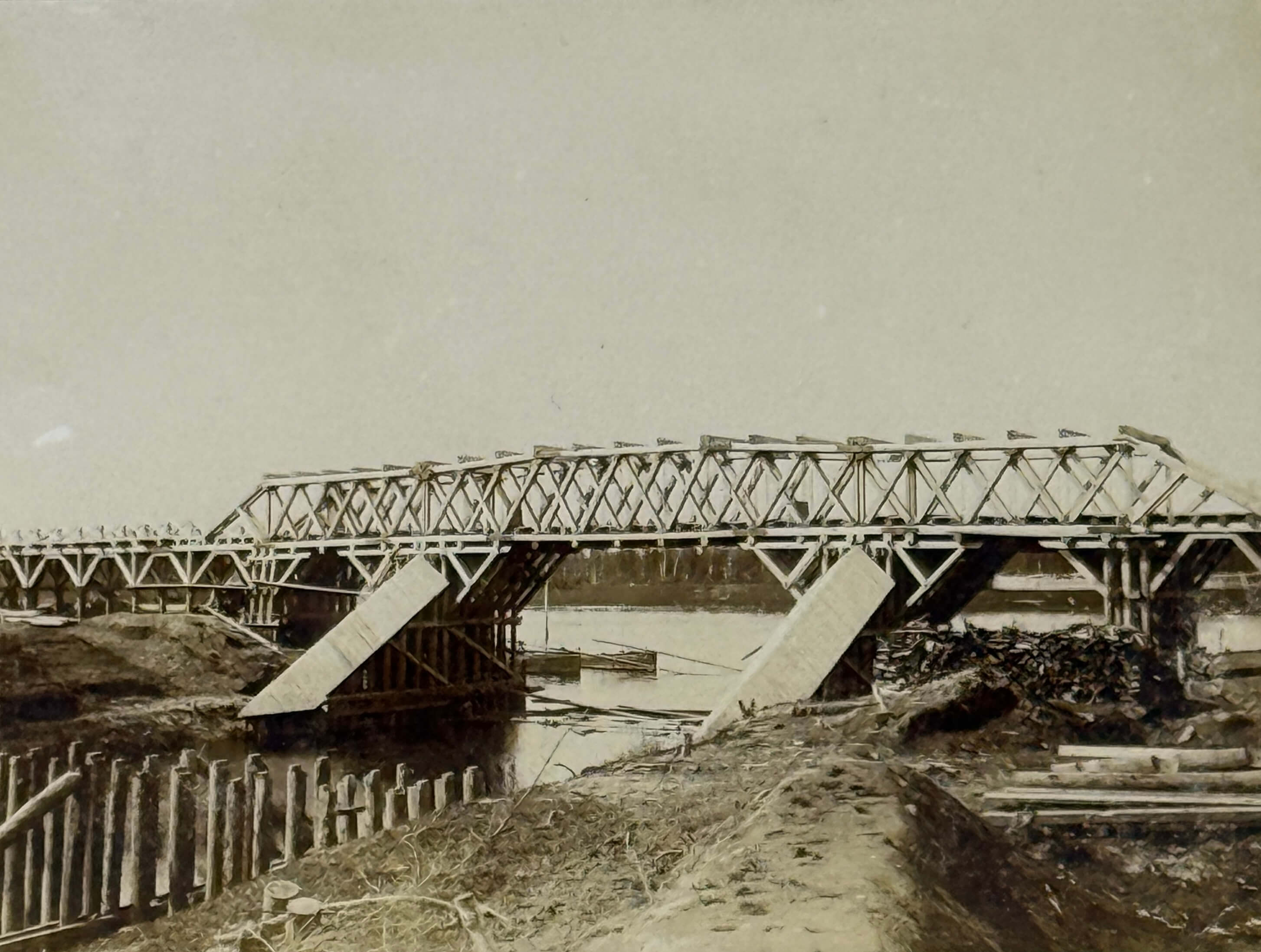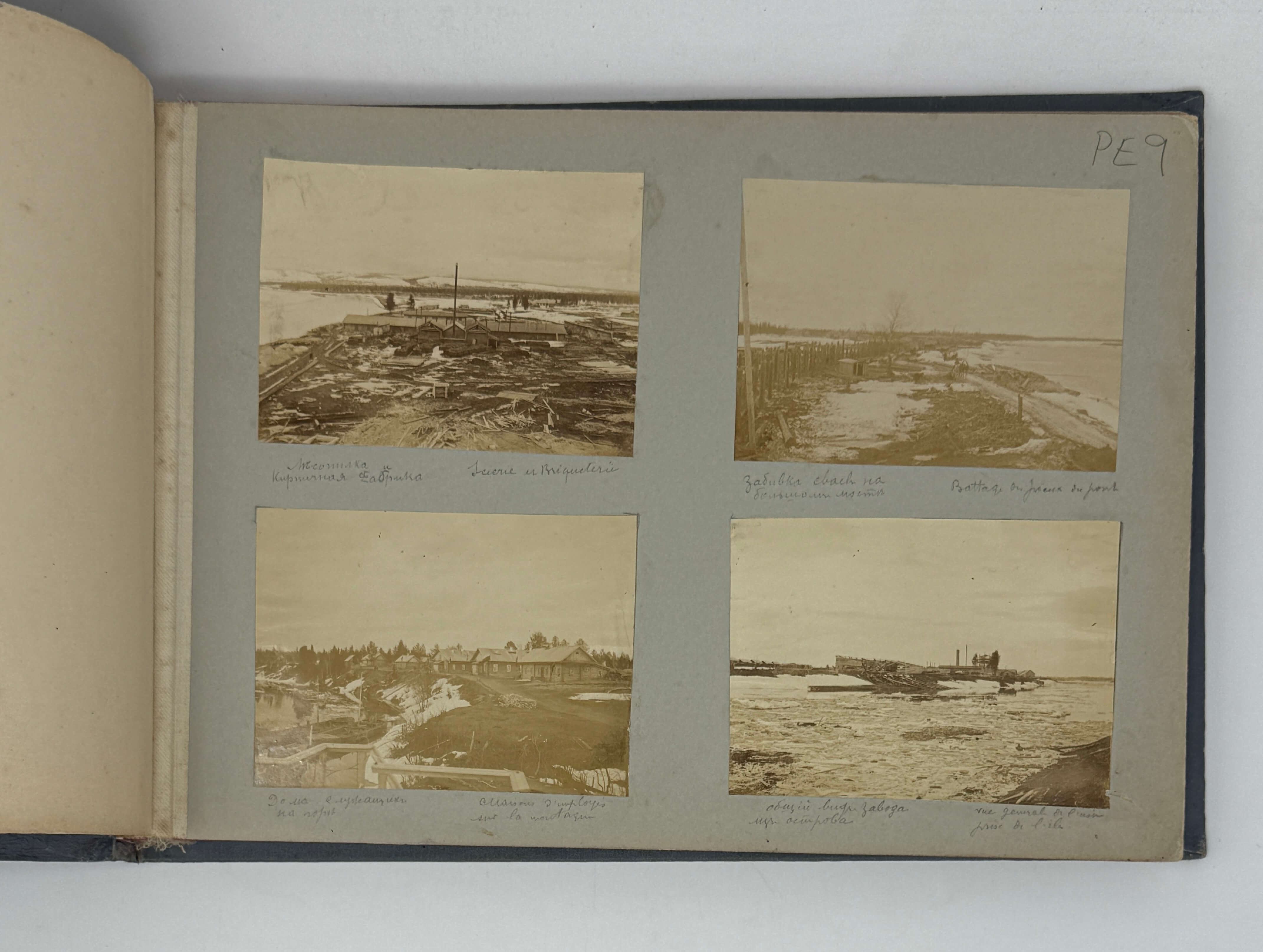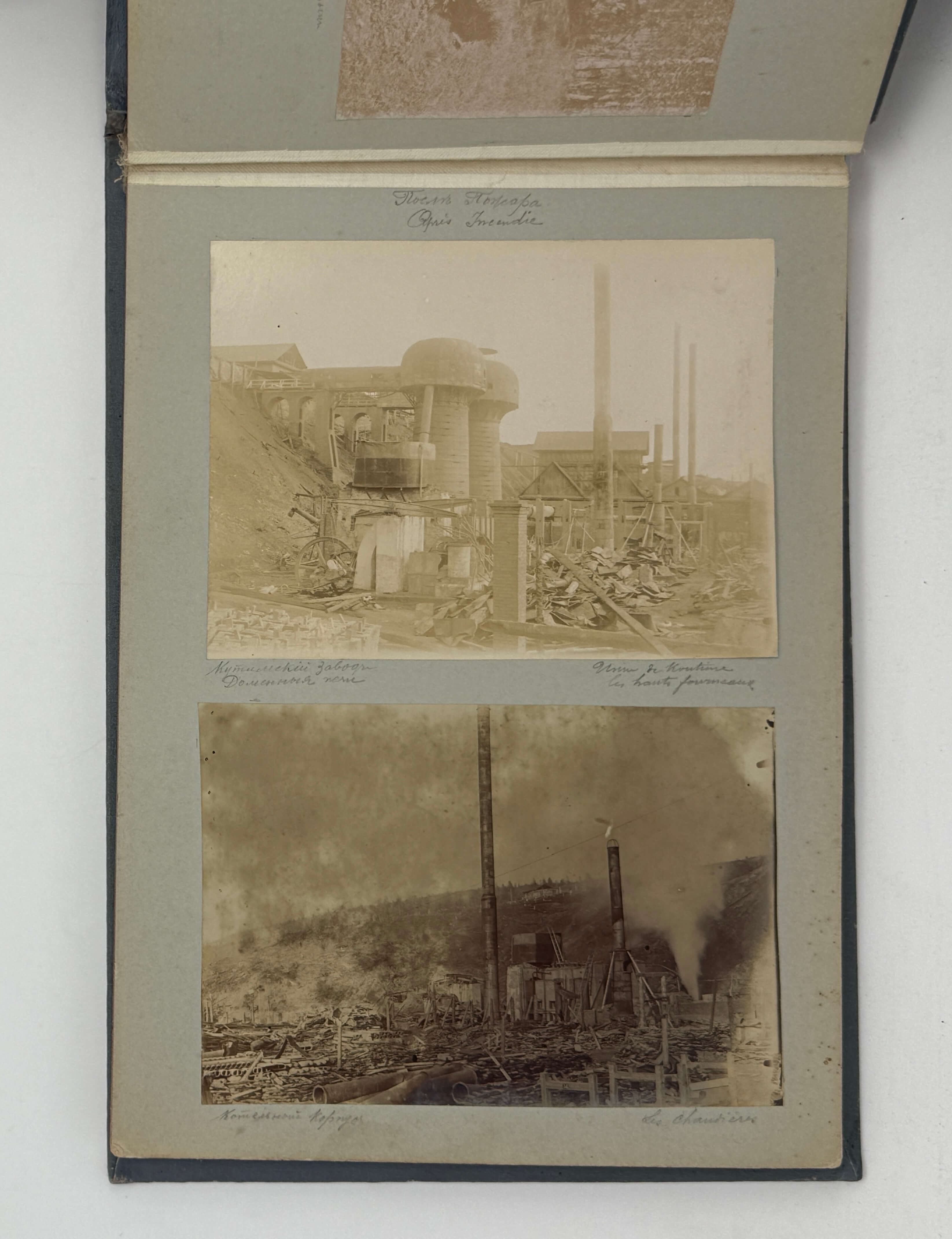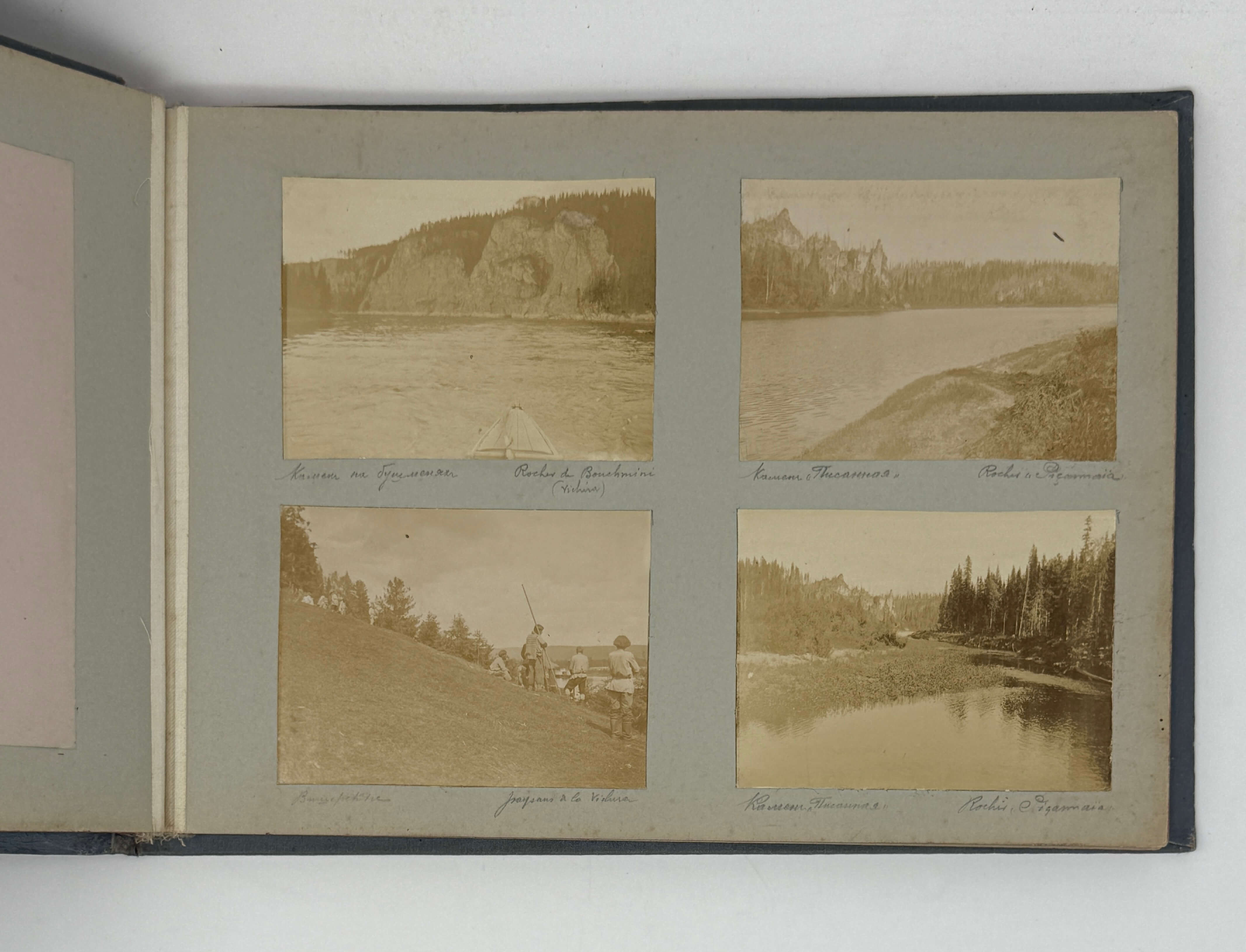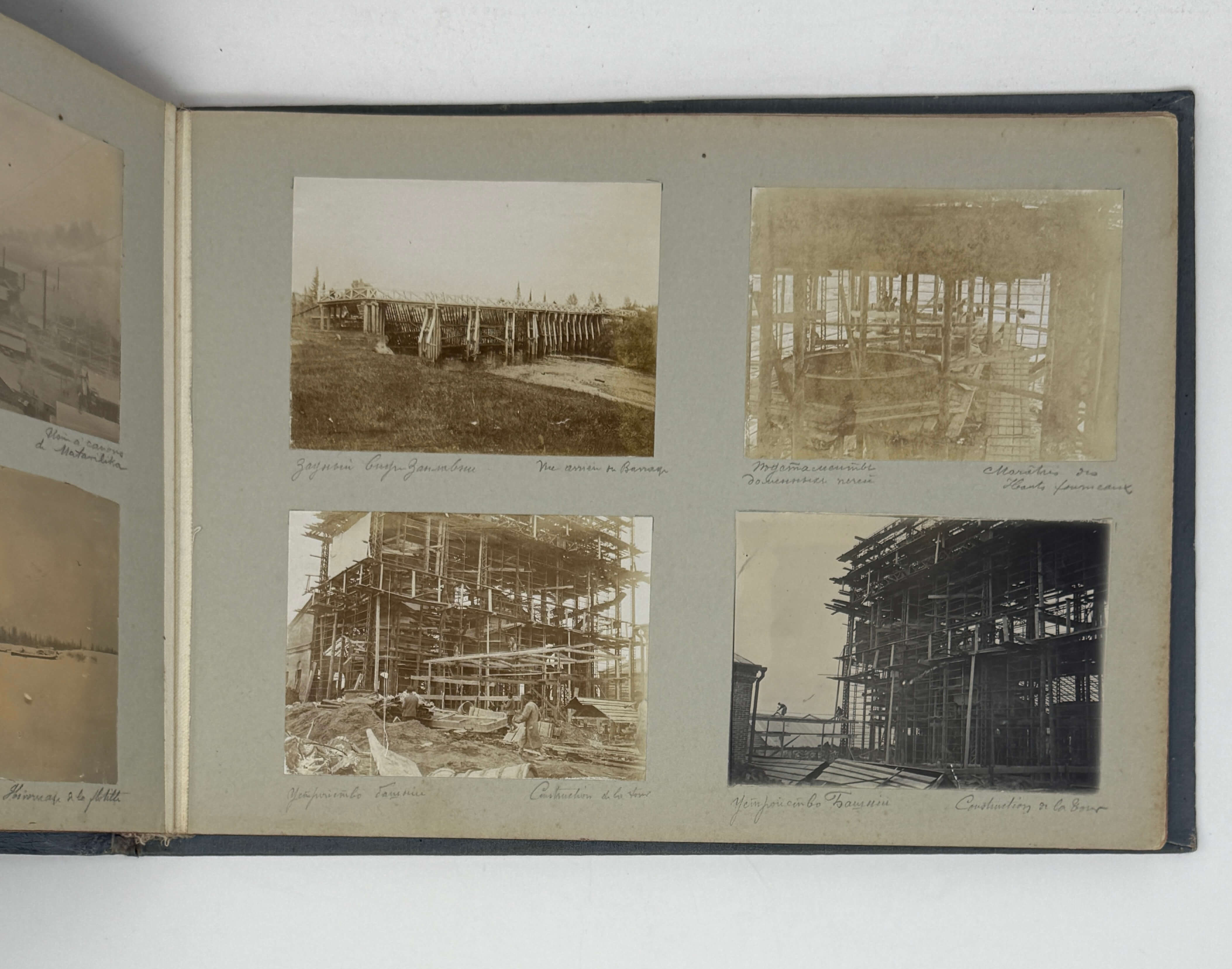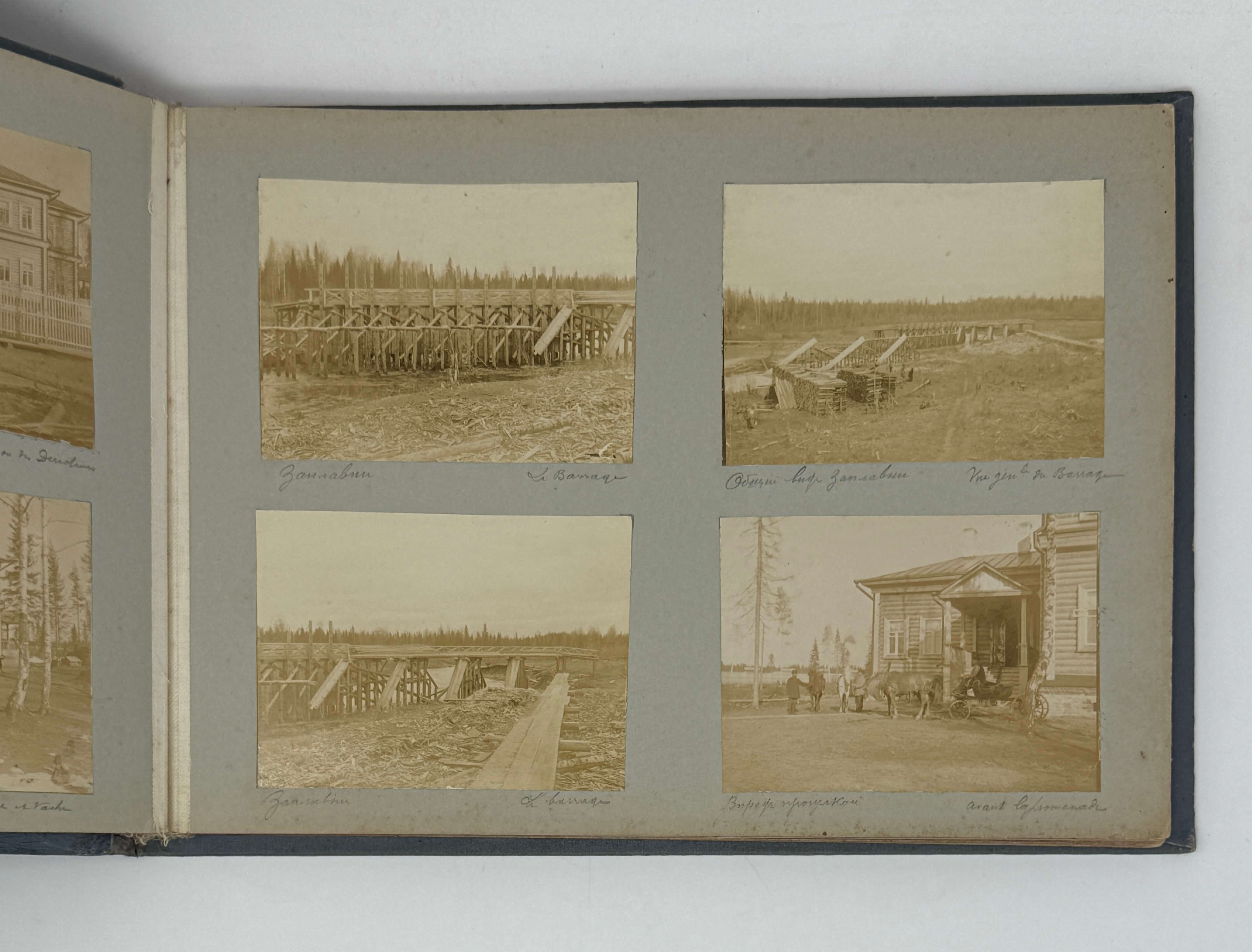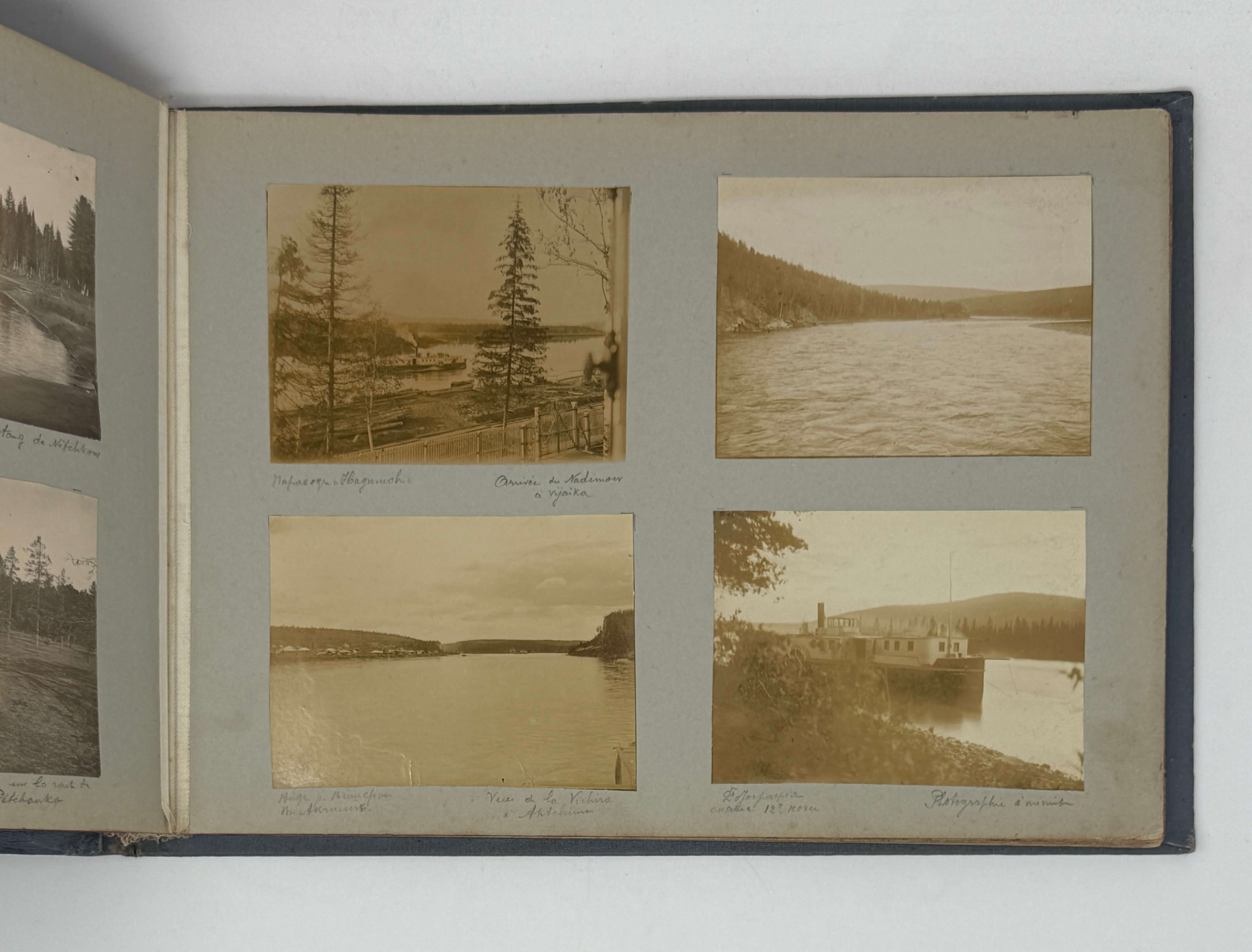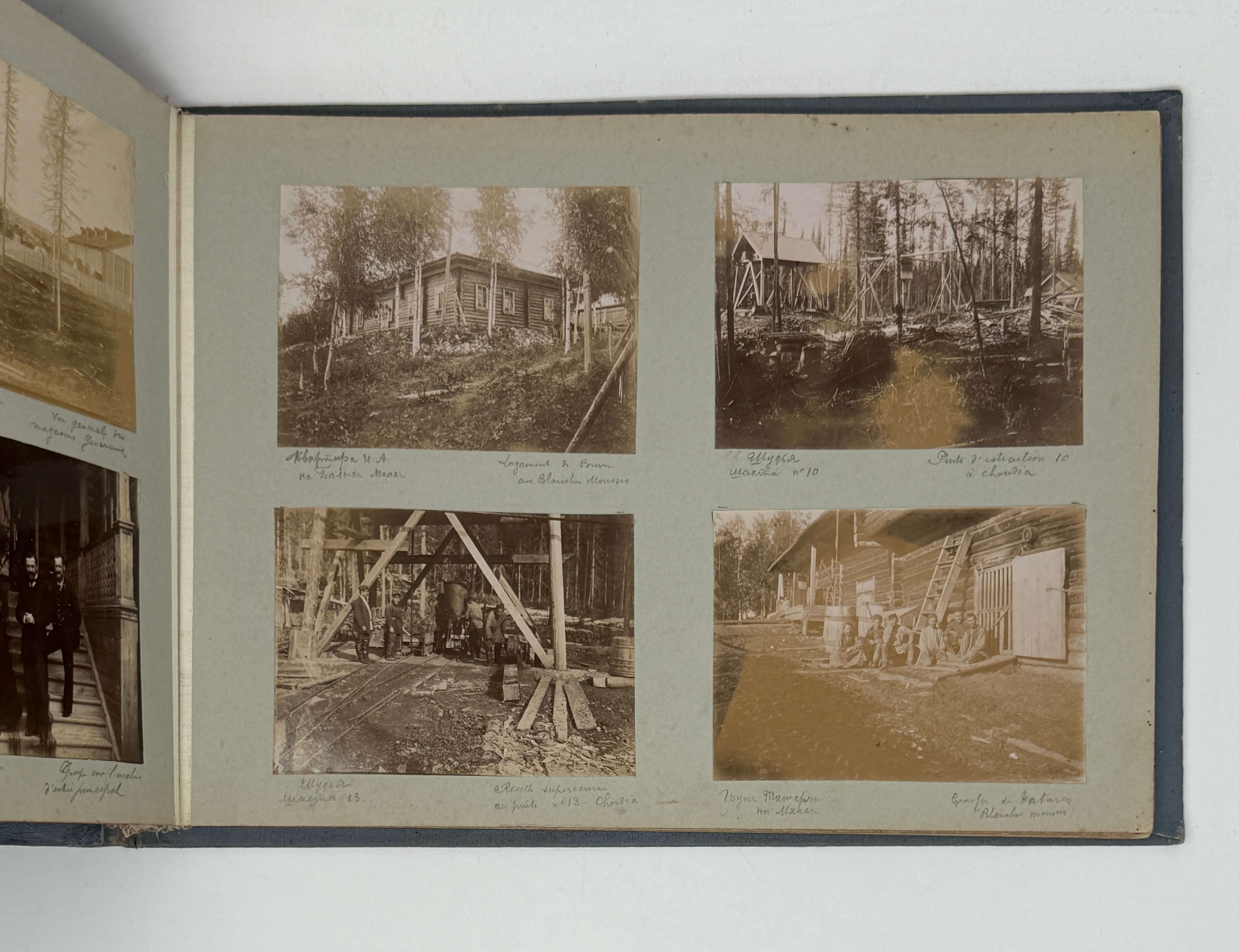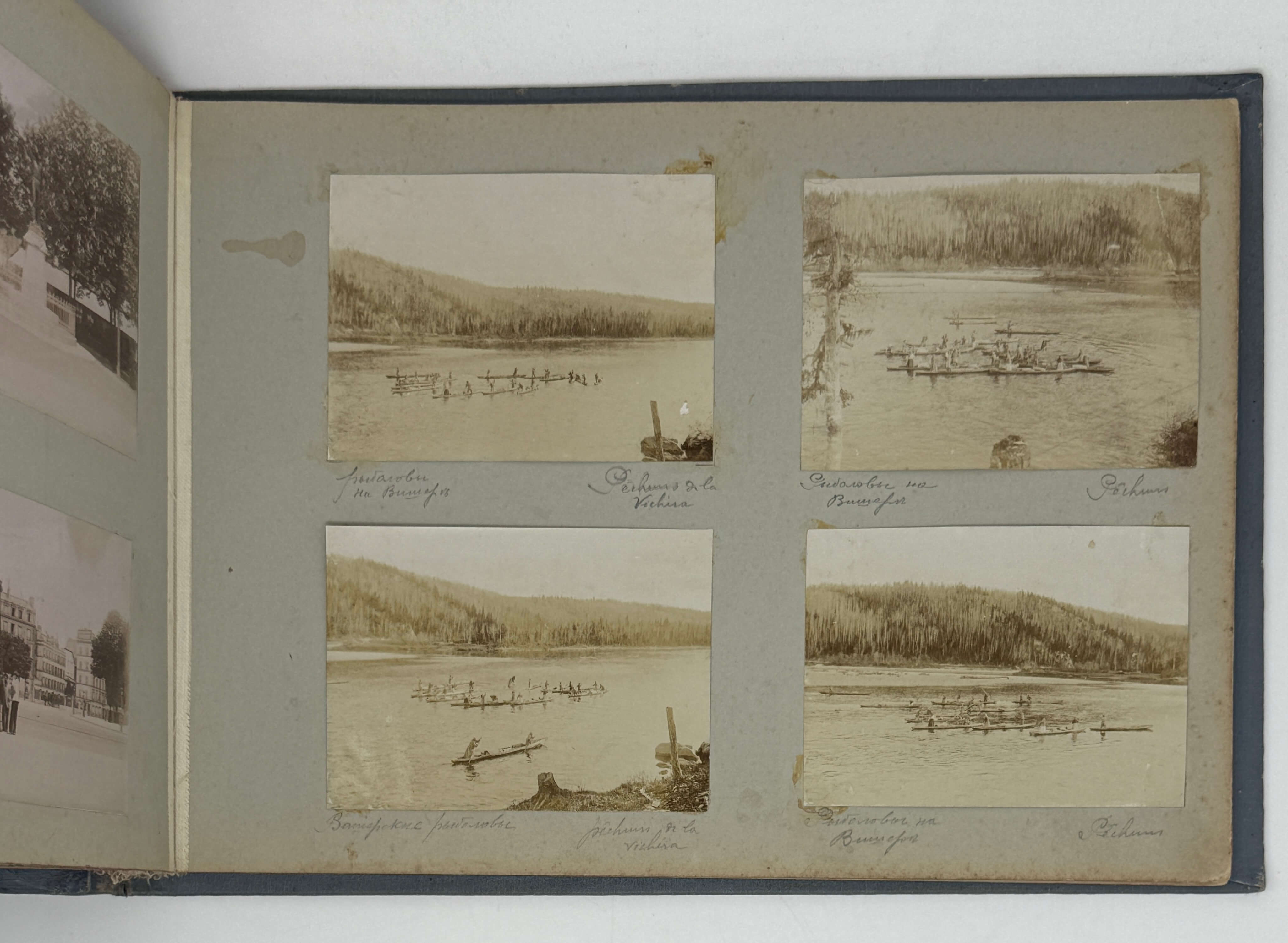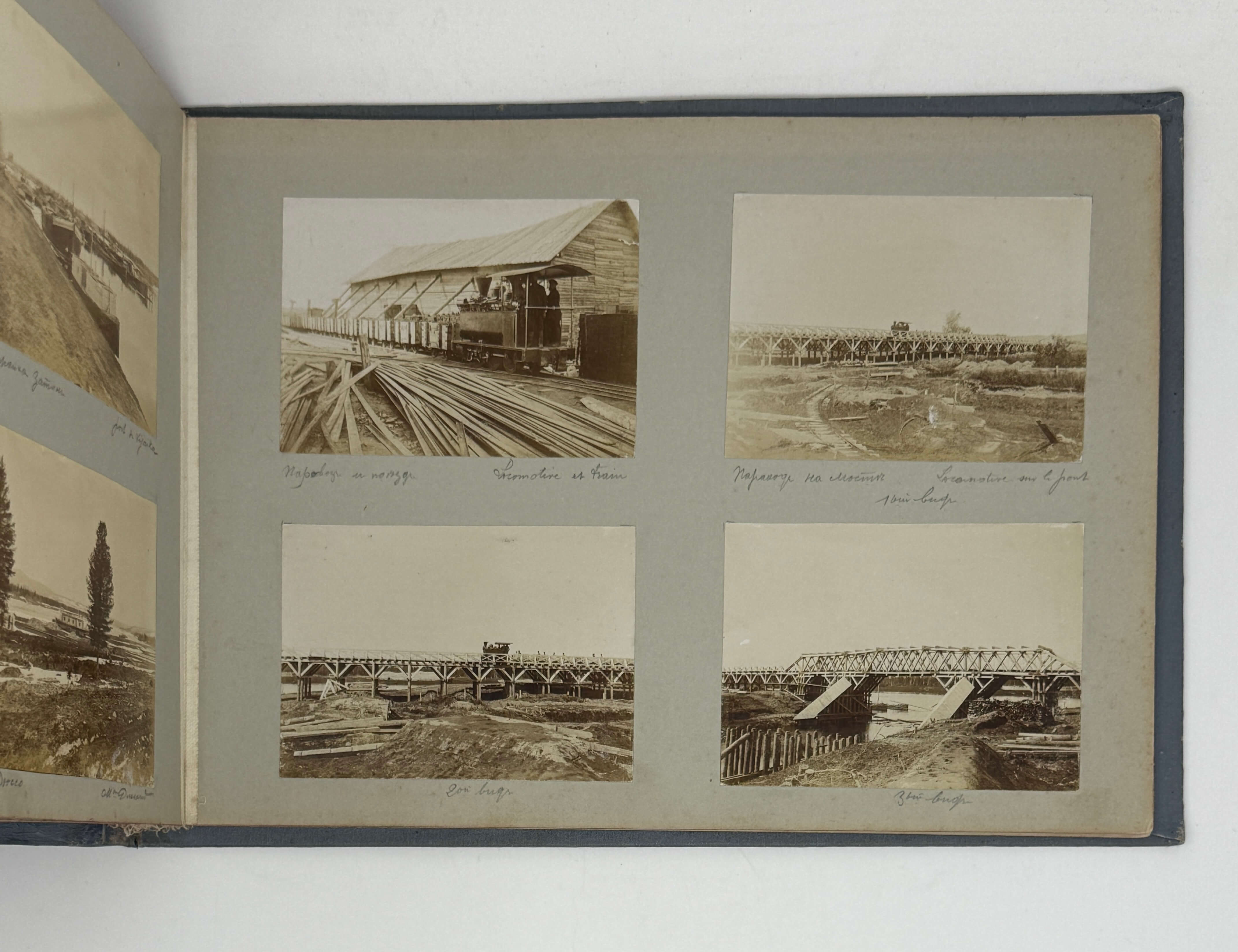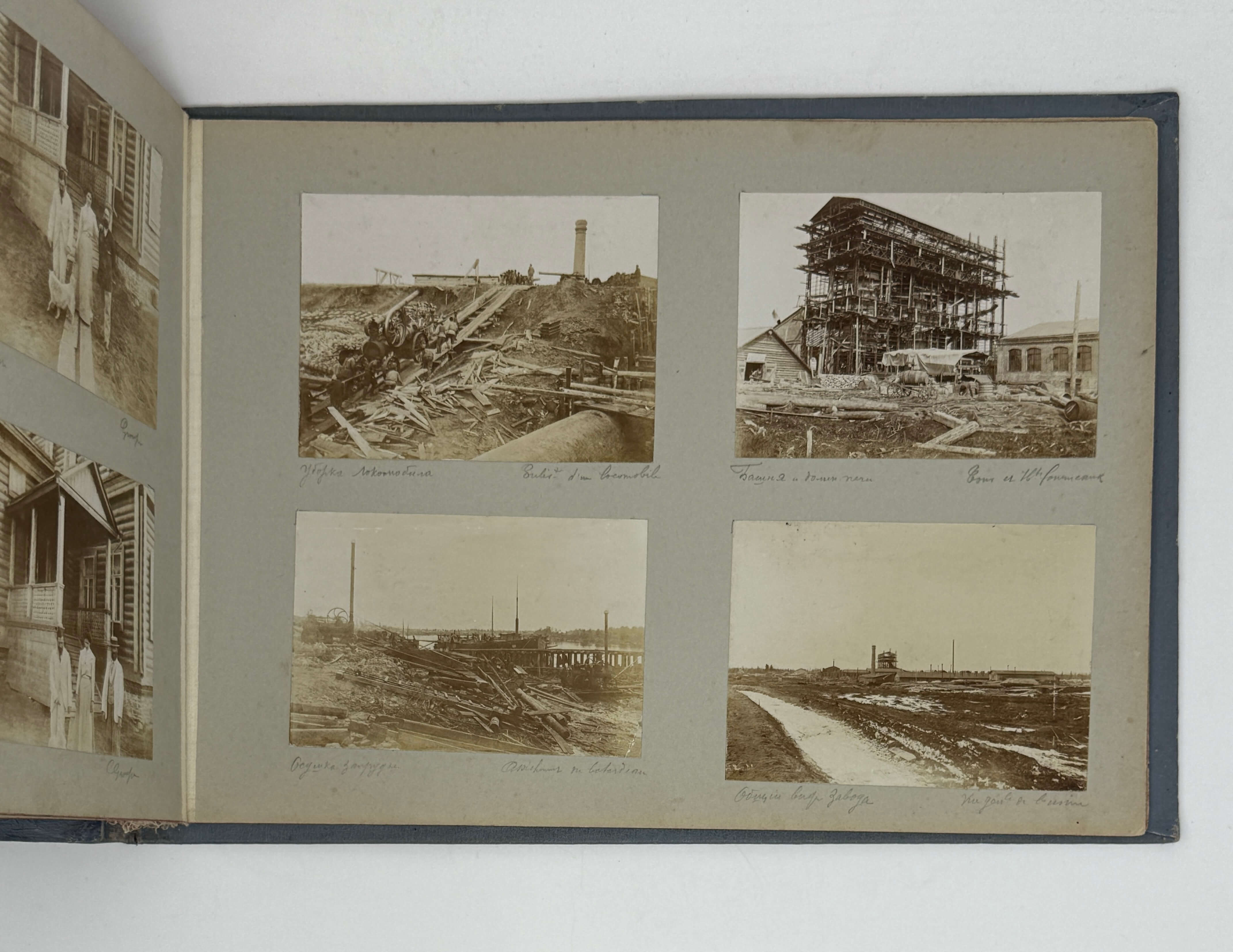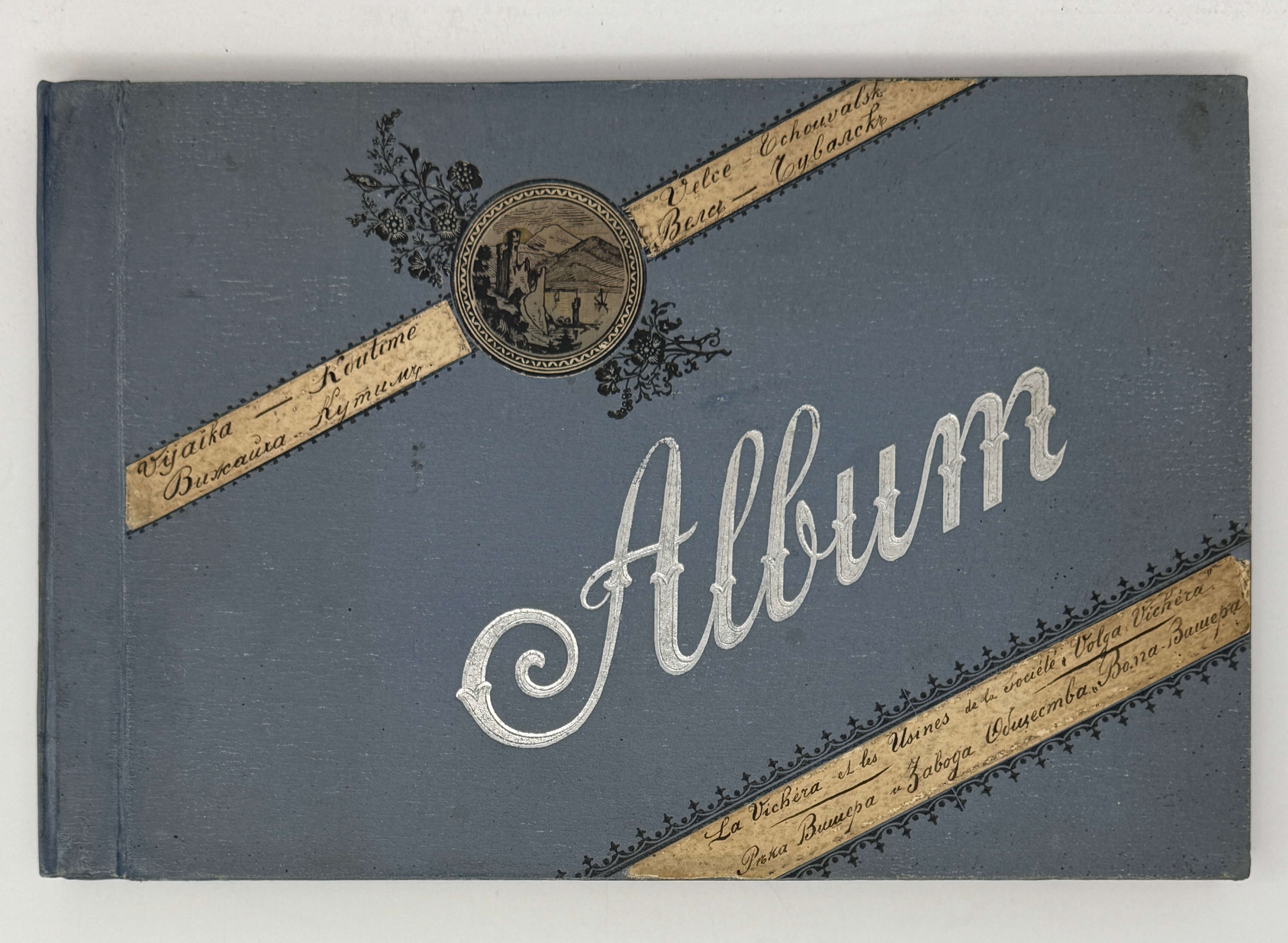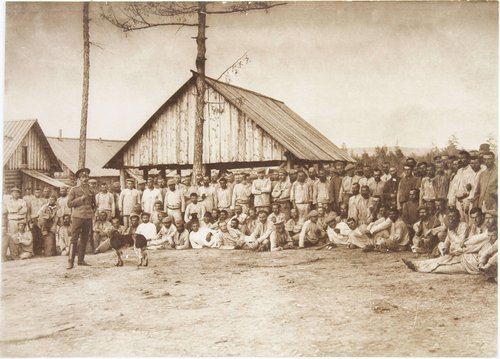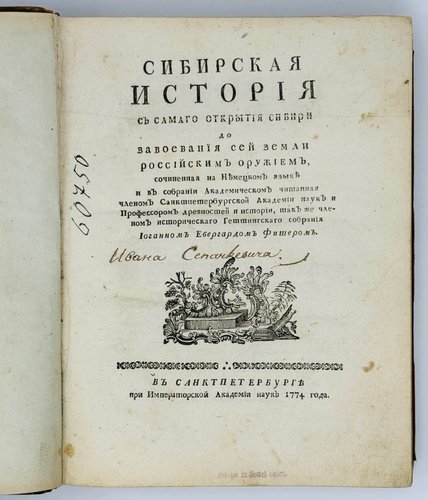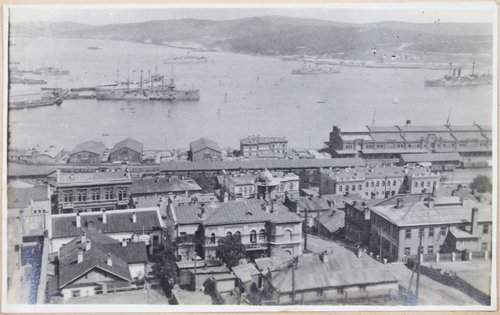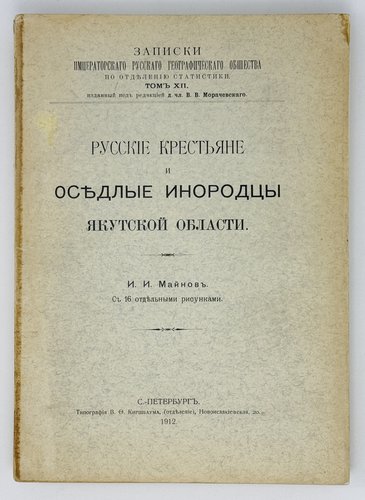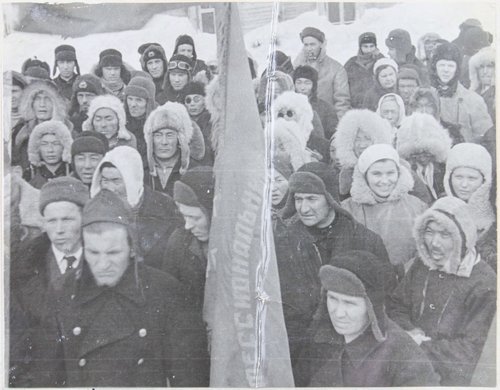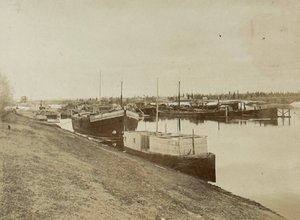
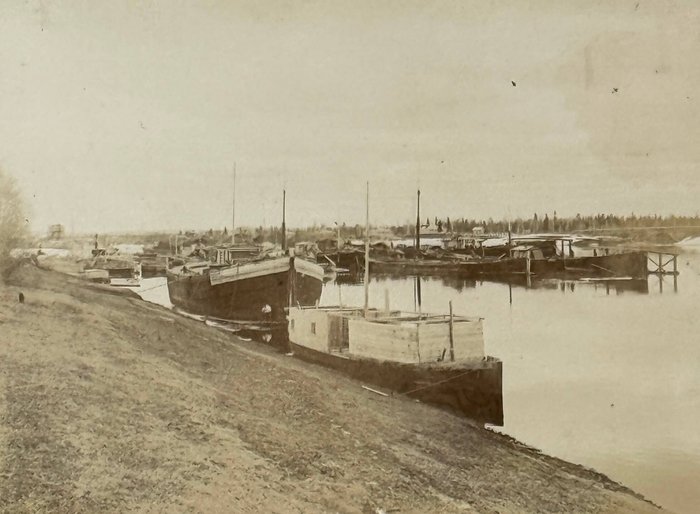
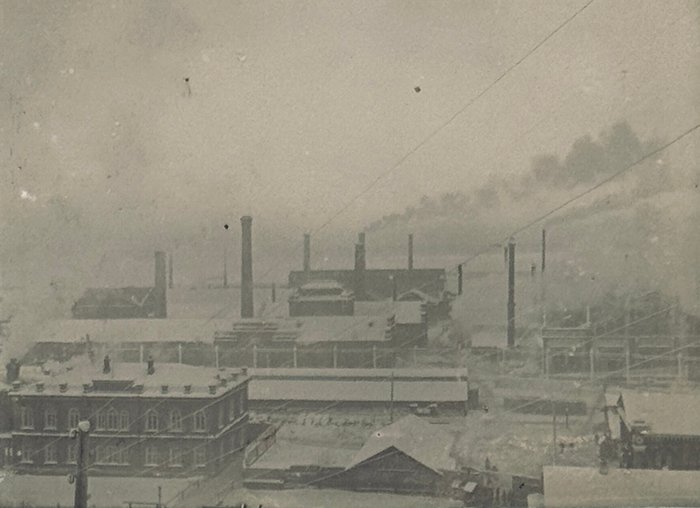
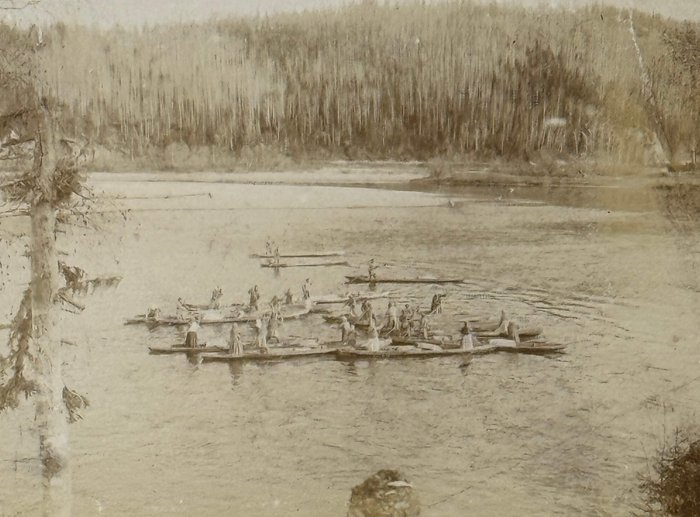
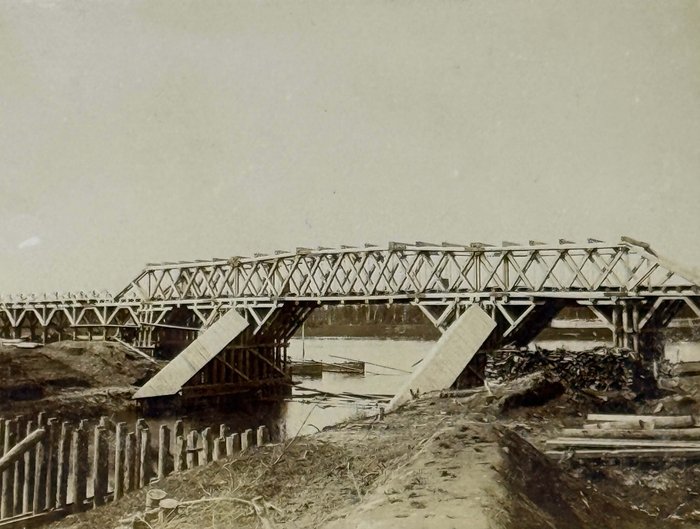
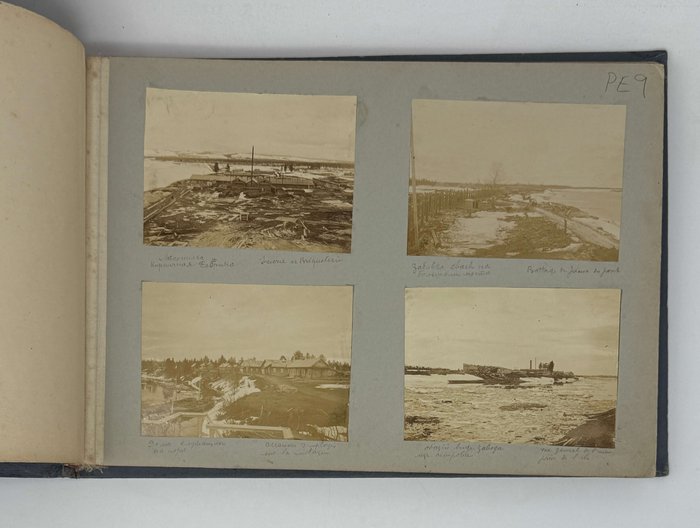
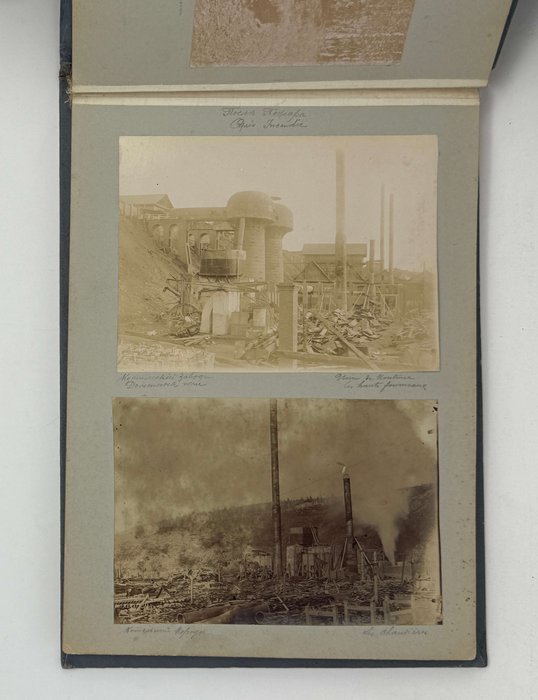
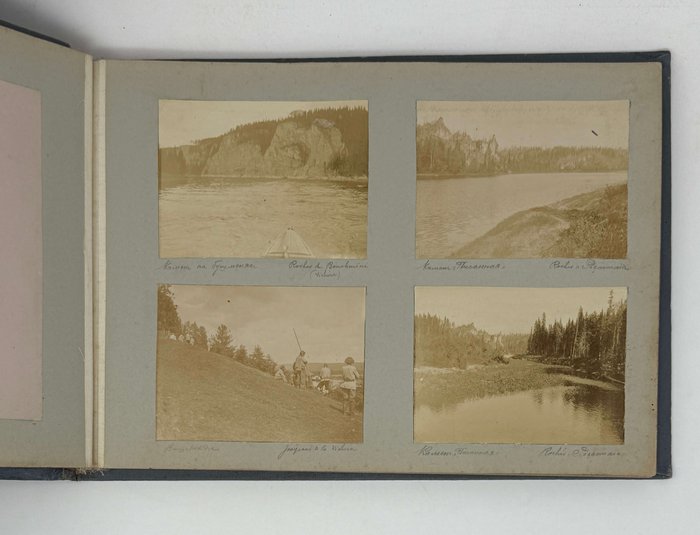
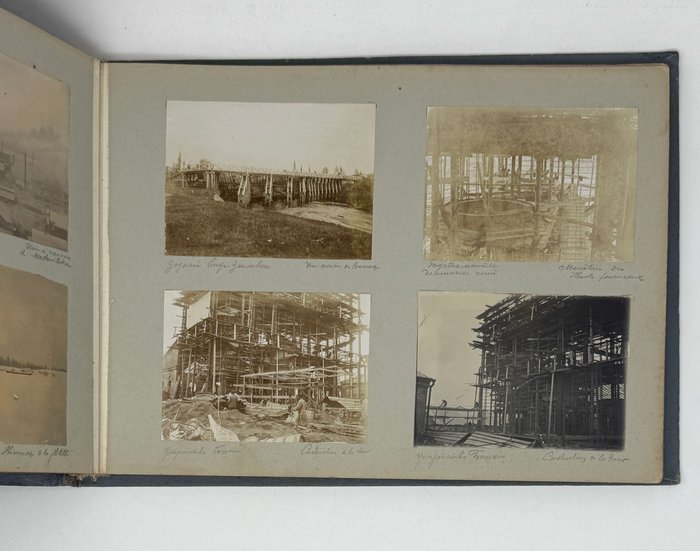
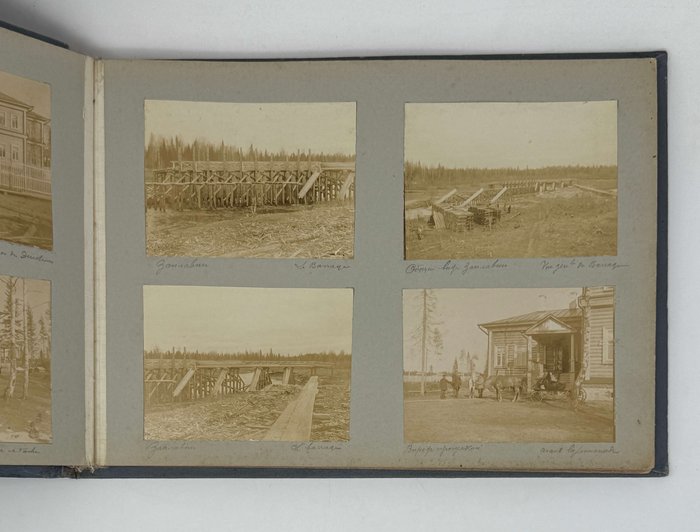
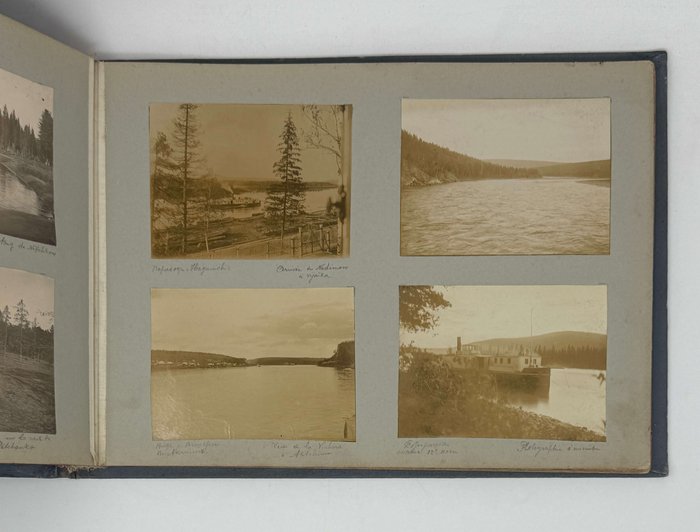
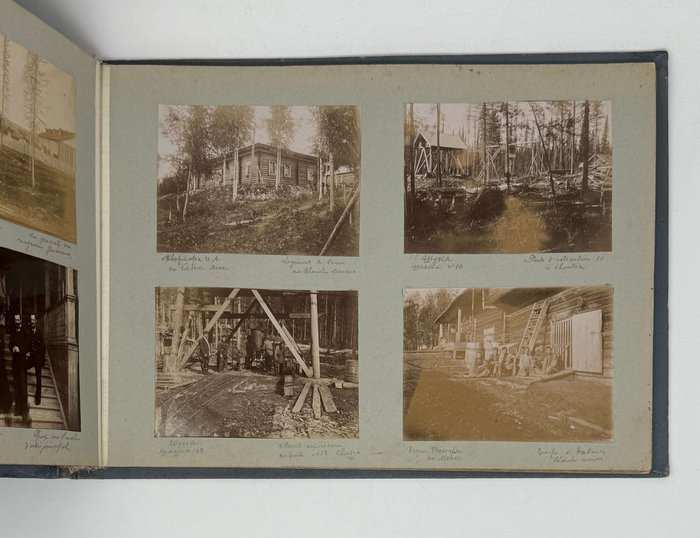
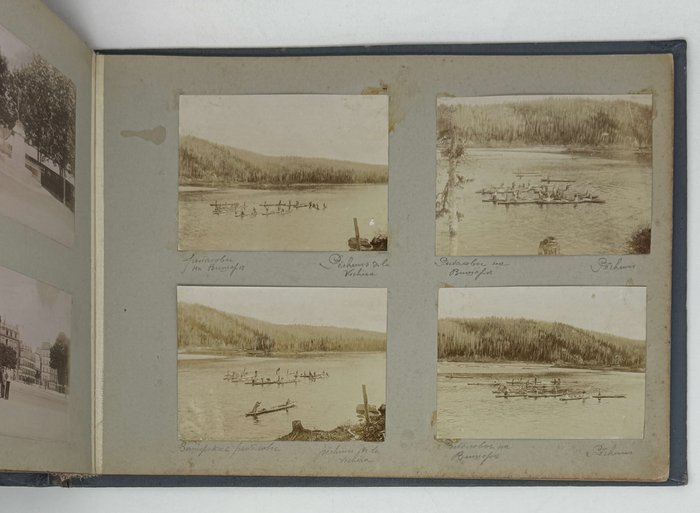
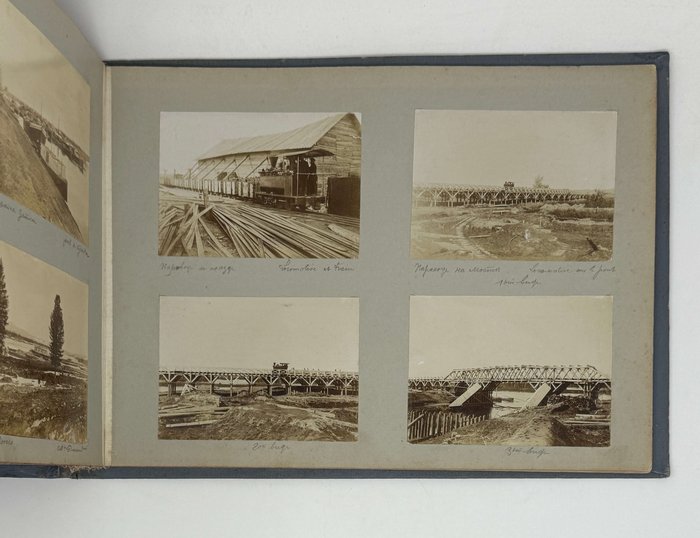
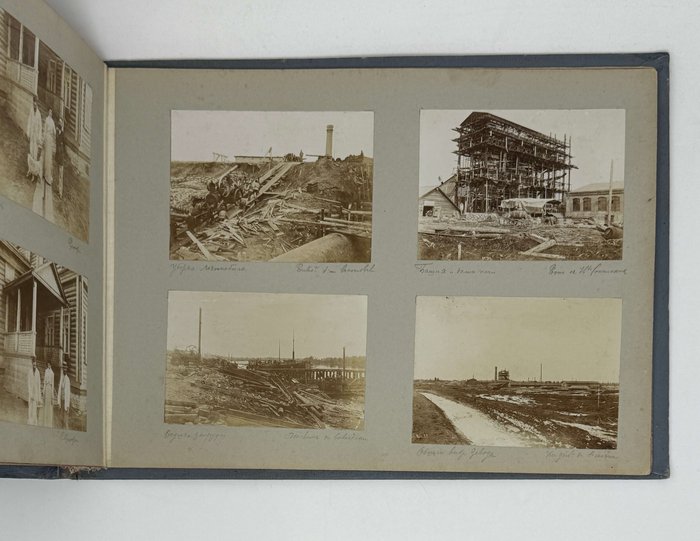
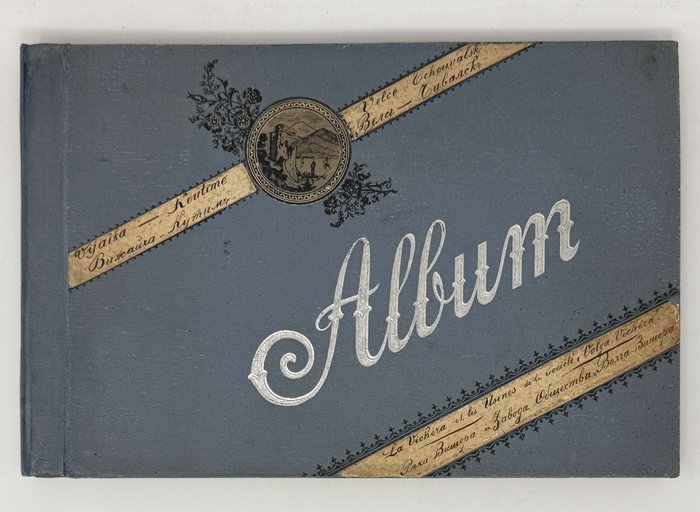
#PE9
Ca. 1890s – early 1900s
Oblong Folio album (ca. 23x34,5 cm or 9 x 13 ½ in). 15 card stock leaves. With 100 mounted original gelatin silver photos, including four larger images ca. 12,5x17 cm (5 x 6 ½ in); the rest of the photos are ca. 8,5x11 cm (3 ¼ x 4 ¼ in). All photos with period pencil captions in Russian and French on the mounts. Period grey full cloth album; silver-stamped title "Album," colour-stamped ornaments and manuscript ink title in Russian and French on the front cover. Decorative endpapers, all edges coloured. Binding slightly soiled and rubbed on extremities, a few photos mildly faded, but overall a very good album of interesting photos.
Historically significant rare collection of well-annotated original amateur photos, documenting the construction of Russian and French-owned metallurgical factories on the Vishera River and its tributaries in the Kama River basin of the Eastern Ural Mountains, (modern-day Perm Krai of Russia), in the late 1890s - early 1900s.
The first metallurgical factory in the area was established in 1890 on the Kutim River, a tributary of the Uls River in the Upper Vishera basin. The "Société Minière et Métallurgique Volga-Vichéra" was established in 1897 by a group of French banks and companies, a prominent Russian entrepreneur of French origin, Yury Goujon (1852-1918), and others. The company acquired the factory on the Kutim River and constructed new plants in the mouths of three of Vishera's tributaries - Vels River, Akchim River, and Vizhaikha River (location of the future town of Krasnovishersk). Vishera River served as the main transport artery, so the navigation was improved by clearing its watercourse and building dams. By the early 1900s, nine company steamers went up the Vishera as far as to the iron mines near the camp of Upper Chuvalsk above its confluence with the Vels River (now the territory of Vishera Nature Reserve). Due to the economic crisis, the company went bankrupt and closed down its factories in 1907, removing the equipment and abandoning the structures. In the 1920s-1930s, the former sites of the factories became forced labour camps of the Soviet Gulag system. Famous Russian writer Varlam Shalamov was imprisoned there in 1929-1931; his experiences are described in the collection of autobiographical essays "Vishera."
Most likely compiled by one of the company's associates, the album includes a series of images documenting the construction of the metallurgical factory on the Vizhaikha River: views of the brick factory and the sawmill, construction of the factory's "tower," furnace foundations, auxiliary railway and cargo trains, construction of a river dam, installation of stilts and the floor of the bridge, loading of a "locomobile," house of the Director, barracks for the workers, warehouses, a road under construction, &c. Two large photos show the Kutim factory "after the fire" (blast furnaces and boilers) and two - the settlement of Ust-Uls (the wharf and charcoal furnaces). There are also general views of Vizhaikha, Belye Mhi/"White Mosses" (houses of engineers, Tatar workers, mine shafts), Akchimsk, and Nizhny Chuvalsk (wharf). Several photos show the company's river steamers "Vels" (with a scene of a church service), "Alexander Nevsky," and "Nadimov," as well as images of the steamers wintering at Vizhaikha. There are also photos of various parts of the middle Vishera River with rocky banks, ice drift, and local peasants and fishermen. Several photos portray the company's engineers and associates ("I.M. Novosyolov,” "I.S. Bryn,” "G.I. Zhurda"), their families, dogs and cats. There are also two general views of the Motovilikha metallurgical plants in Perm.
Overall an interesting, content-rich original source on the history of Russian-French metallurgical enterprises in the Eastern Ural Mountains in the late 19th – early 20th century.

